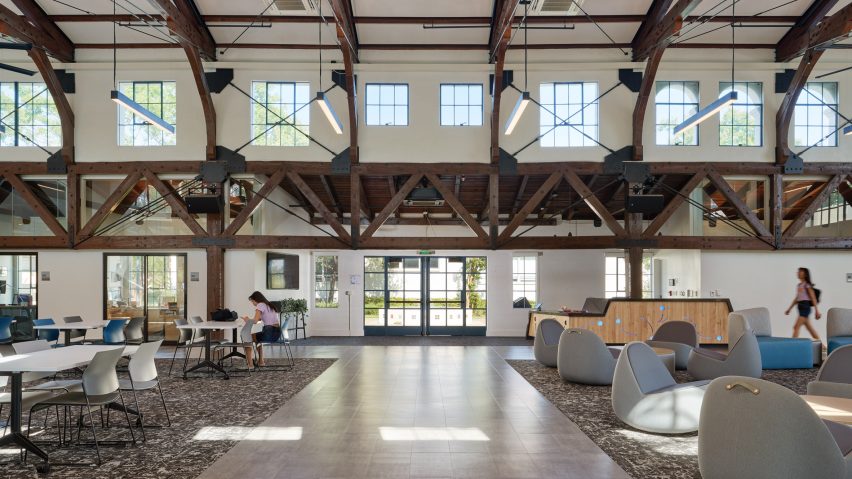Climate change is making it harder to prioritise retrofitting buildings to withstand earthquakes, architect John Lesak tells Dezeen in this interview for our Designing for Disaster series.
Lesak, a principal at California architecture studio Page and Turnbull, has spent decades making older buildings more resilient to seismic activity.
But he warned that rising costs associated with climate change are diverting money away from earthquake-proofing structures in the state.
"Earthquakes don't lie"
He used the example of air filtration systems due to wildfires as a prime example of more money going towards "non-structural systems".
"They are all connected, and they act upon each other quite a bit," Lesak said of competing environmental factors. "Almost everywhere in the United States is seeing red skies."
America's most populous state is highly prone to earthquakes, with the San Andreas fault running almost its entire length.
Seismic events have therefore played a large role in shaping construction and building in California.
Lesak pointed to the destruction of masonry buildings in the early 20th century as a reason for the construction of many concrete public buildings.
"I always say earthquakes don't lie," he told Dezeen.
"After the 1933 Long Beach earthquake our schools got rebuilt, and they're all concrete. The whole way of thinking about public buildings in Southern California was completely changed because of that earthquake."
Lesak's retrofit projects have included the 1928 Los Angeles City Hall, which at the time was the tallest retrofit of a building for earthquakes, as well as more contemporary buildings such as the Capitol Records Building.
"There are some buildings where it just doesn't make sense, but a lot of them it does," he said.
"From a carbon footprint perspective, it makes a ton of sense, because the shell and the cladding are the big carbon investments in buildings and you can keep that stuff here."
"You better have enough resiliency"
Usually, these retrofitting projects include placing isolating dampers at the foundations so that they can take on more force from the earthquake's shocks.
"I always think of them as stacks of coins that are surrounded by rubber," said Lesak of the isolators.
"And they have to create a moat around the building to allow it to kind of slide so you're trying to stop the kind of disparate motion that can happen."
Earthquake-proofing existing buildings in California is currently particularly focused on soft-storey structures – where there are voids in the lower part of the building, usually for parking.
Many of these buildings were hastily constructed in the 1970s to account for a rapidly growing population, but suffered badly during the Northridge Earthquake in 1994.
In the mid-2010s, Los Angeles declared that these types of buildings needed to be retrofitted.
Lesak estimated that of more than 12,000 buildings that were declared in need of retrofits, more than 8,000 have already been carried out.
Ultimately, despite conflicting priorities, cities need to protect themselves from earthquakes to maintain their industries and populations, Lesak contended.
"If you lose that industry, you lose the brain power, and that's your big resource for economic generation," he said.
"So if you want to keep all that you better have enough resiliency to make sure your buildings can handle earthquakes."
Designing for Disaster
This article is part of Dezeen's Designing for Disaster series, which explores the ways that design can help prevent, mitigate and recover from natural hazards as climate change makes extreme weather events increasingly common.

